#commodore cbm-ii
Explore tagged Tumblr posts
Text

The Transactor September/October 1982
In this single case I'm skipping multiple years of "text-only covers" and moving on a cover illustration. This issue of a Canadian magazine filled with technical details about programming Commodore computers was, though, the first under new management after "Commodore Canada" had decided to discontinue it. It included a "preliminary review" of the Commodore 64, "Commodore's newest entry and, without a doubt, their best so far" (its only identified weakness its built-in "BASIC 2.0" rather than "4.0").
28 notes
·
View notes
Text

Breadamp V07 - This is a sample music player that uses the REU of the 1541 Ultimate, Ultimate 64 or similar devices as a mass storage device to play the audio from.
#commodore#retro#c64#vintage#classic#cbm#8bit#u64#sample#music#player#REU#1541 Ultimate#1541 Ultimate-II(+)#REUmaker#6581#8580#SID#FPGASID
24 notes
·
View notes
Text

Commodore CBM-II (1982-84)
1K notes
·
View notes
Note
I still believe the craziest form of computer program storage format from the 1980s is the cassette tape. Logical I get it but to store entire programs on little tape (that I only remember using to play music) is just crazy to me. Idk
Agreed, cassette tape for data storage was really clever. The concept had its heyday was the 1970s in a wide variety of encoding schemes for different computer platforms. It did persist into the 80s, mostly in Europe, while the US switched to floppy disks as soon as they were available for systems. The majority of my Ohio Scientific software is on cassette.
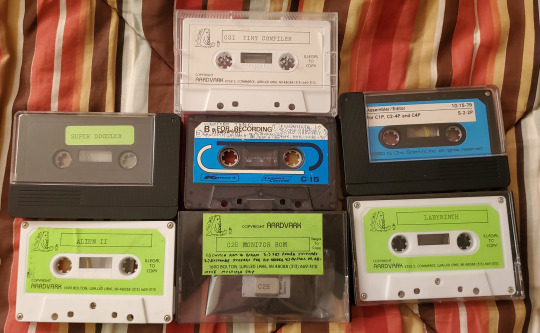
Talking with UK vs. US Commodore 64 users in particular will highlight the disparity in which storage mediums that were commonplace. I've got a few pieces of software on tape for mainly the VIC-20, but I rarely bother to use it, because it's slow and annoying. To be fair, Commodore's implementation of data storage on tape is pretty rock solid relative to the competition. It's considered more reliable than other company's but Chuck Peddle's implementation of the cassette routines are considered quite enigmatic to this day. He didn't document it super well, so CBM kept reusing his old code from the PET all the way through the end of the C128's development 7 years later because they didn't want to break any backward compatibility.

The big thing that really made alot of homebrewers and kit computer owners cozy up to the idea was the introduction of the Kansas City Standard from 1976. The idea of getting away from delicate and slow paper tape, and moving towards an inexpensive, portable, and more durable storage medium was quite enticing. Floppy disk drives and interfaces were expensive at the time, so something more accessible like off the shelf audio tapes made sense.
I've linked two places you can read about it from Byte Magazine's February 1976 issue below (check the attribution links).
You might recognize a familiar name present...
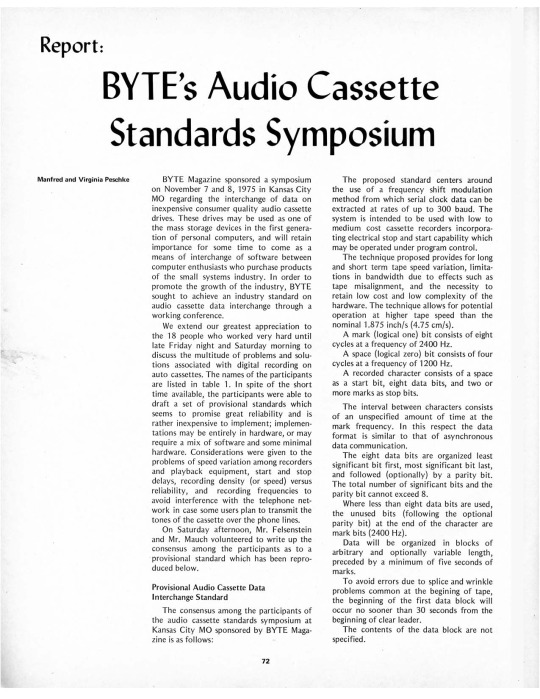
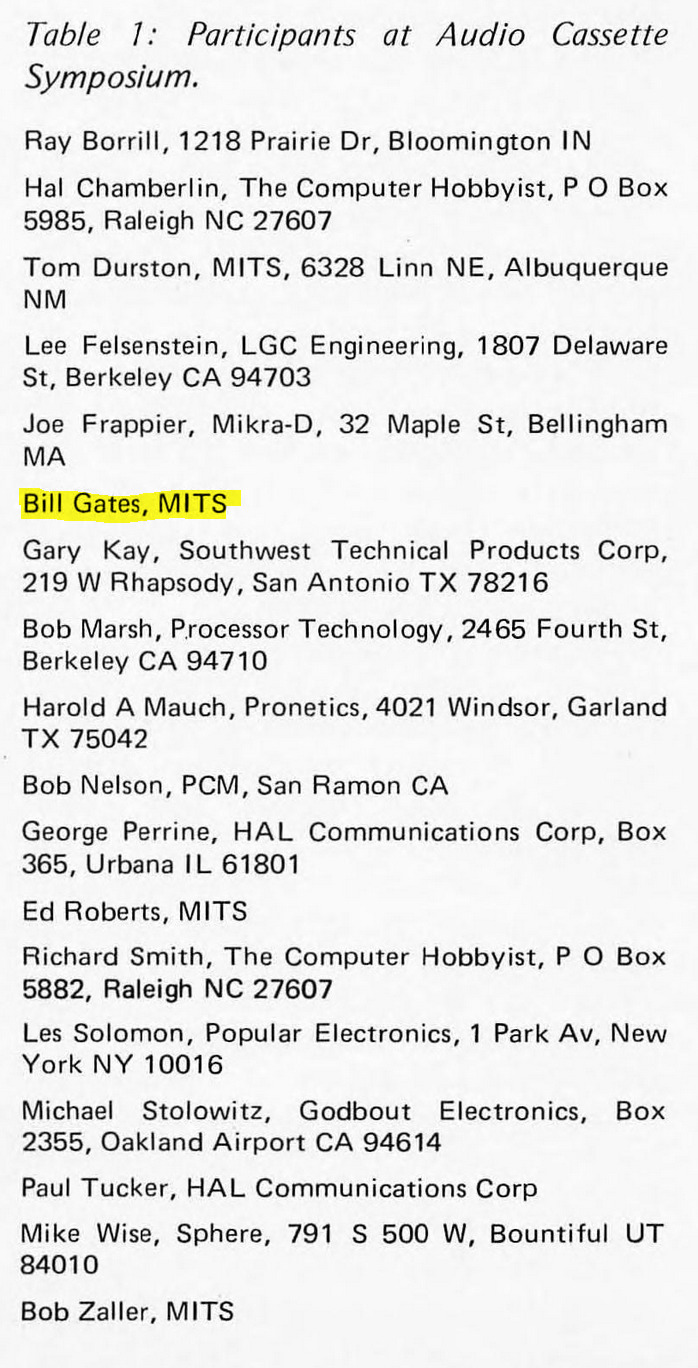
There are a few ways to encode binary data on tape designed to handle analog audio, but the KCS approach is to have 1's be 8 cycles of 2400Hz tone, and 0's be 4 cycles of 1200Hz tone. I say cycles, because while 300 baud is the initial specification, there is also a 1200 baud specification available, so the duration of marks vs spaces (another way of saying 1's and 0's), is variable based on that baud rate. Many S-100 computers implemented it, as do a few contemporary proprietary designs.
The big 3 microcomputers of 1977 that revolutionized the industry (Apple II, Commodore PET 2001, and Tandy TRS-80 Model I) each have their own cassette interface implementation. It kept costs down, and it was easy to implement, all things considered. The Apple II and TRS-80 use off-the-shelf cassette deck connections like many other machines, whereas the original variant of the PET had an integrated cassette. Commodore later used external cassette decks with a proprietary connector, whereas many other companies abandoned tape before too long. Hell, even the original IBM PC has a cassette port, not that anybody bothered to use that. Each one used a different encoding format to store their data, rather than KCS.
Here's a sample of what an OSI-formatted tape sounds like.
And here's a Commodore formatted tape, specifically one with VIC-20 programs on it.
I won't subject you to the whole program, or we'd be here all day. The initial single tone that starts the segment is called the "leader", I've truncated it for the sake of your ears, as well as recorded them kinda quietly. I don't have any other tape formats on hand to demonstrate, but I think you get the idea.
You can do alot better than storing programs on tape, but you can also do alot worse -- it beats having to type in a program every time from scratch.
273 notes
·
View notes
Text
Φlaumen Cooperative (Lisp-y style guide ref, part 1...)

Reads as Pflaumen, loosely inspired onto the eponymous information technology firm within Machinegames' Wolfenstein franchise (reference page card below...) & plenty of historically-informed inspirations like DEC, Symbolics, Konrad Zuse KG, KDE E.V, etc.



Context
Essentially, I build my way towards a small creative business to call my very own (with major technological & culturally-driven aspects), which is also related to personal worldbuilding projects & manifestation goals of mine.
Some reference pictures


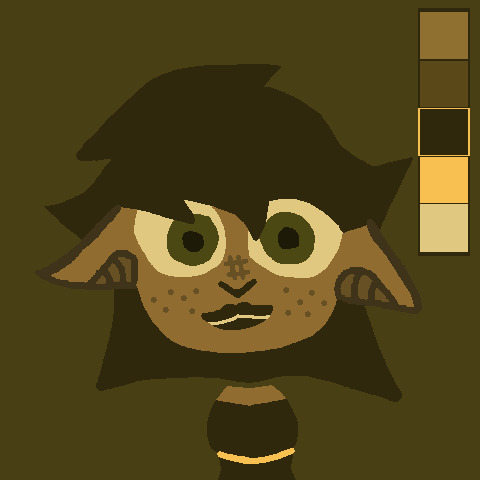

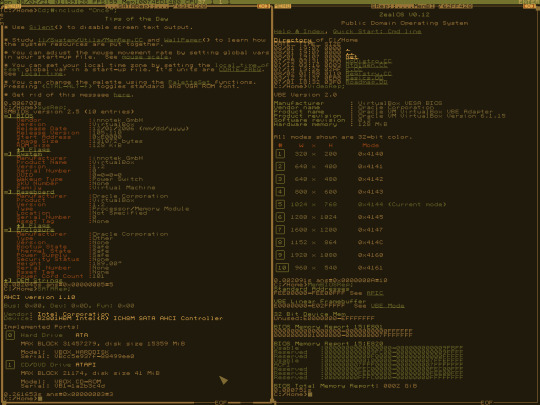
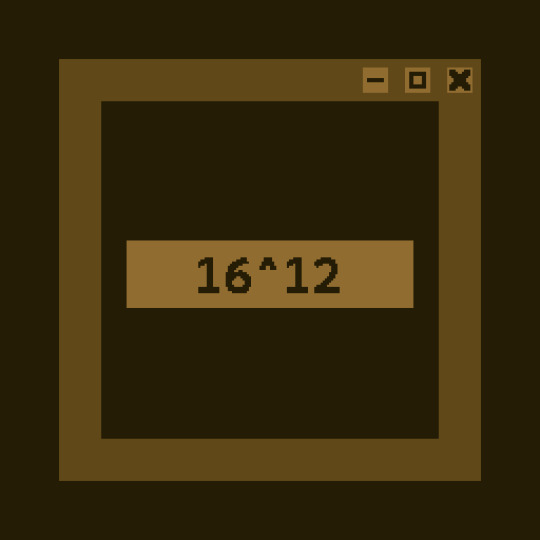
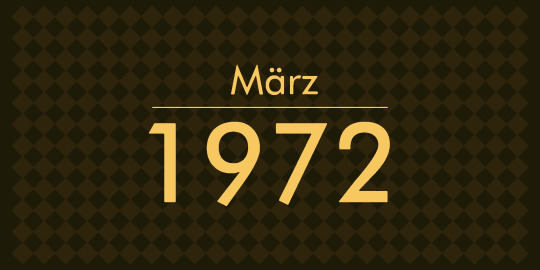
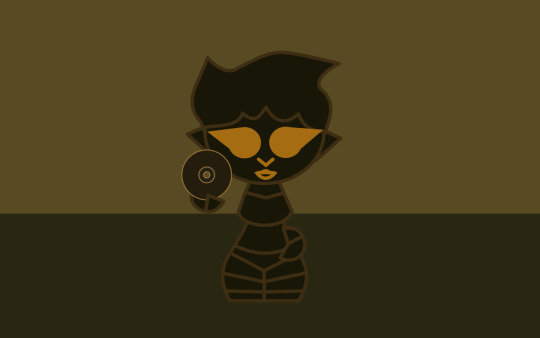
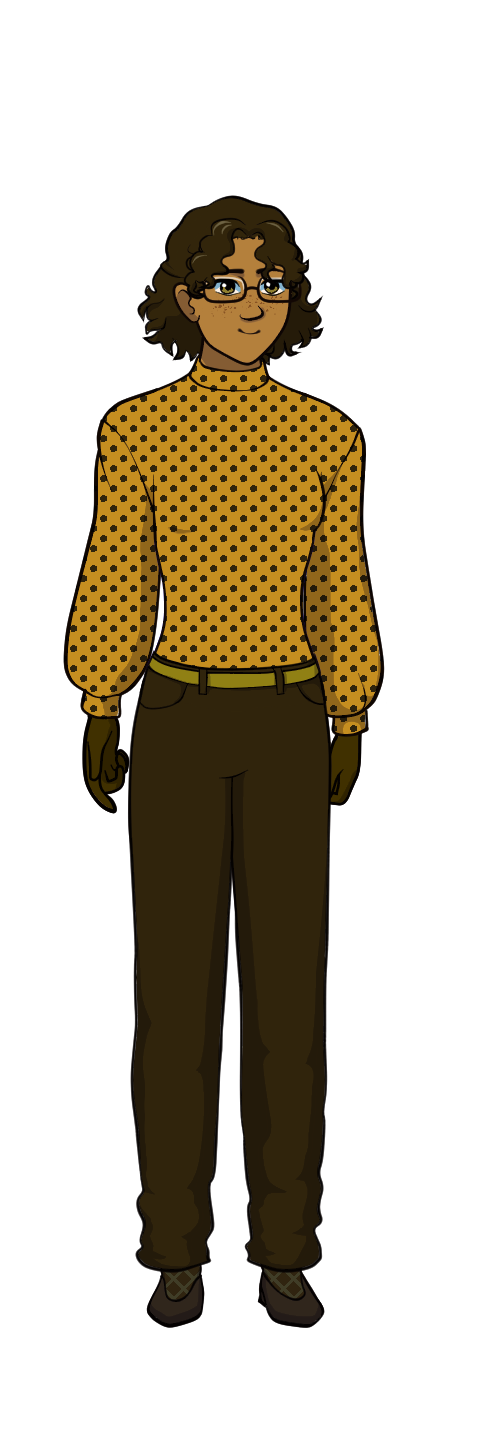


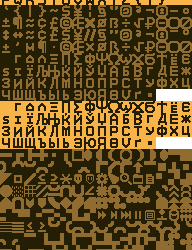
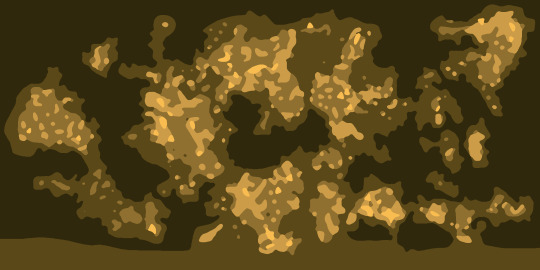


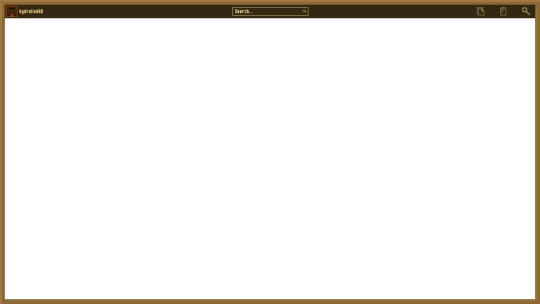
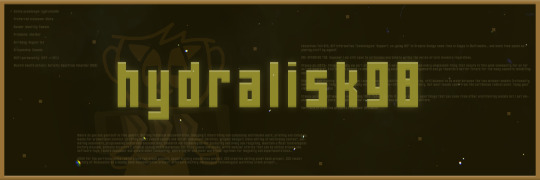
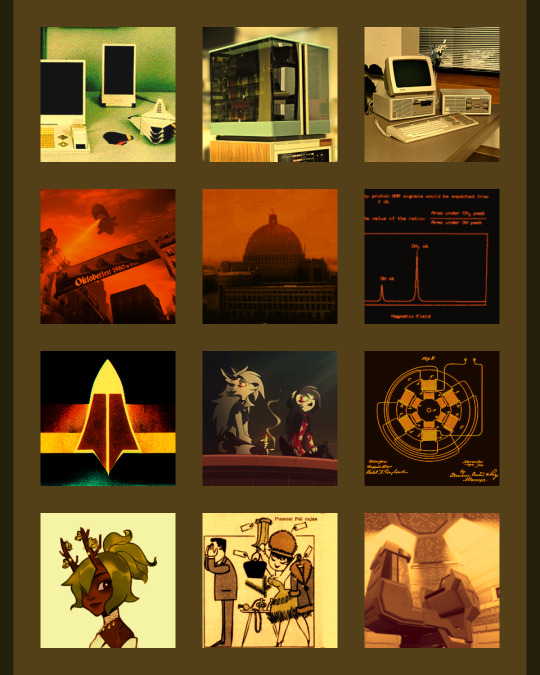
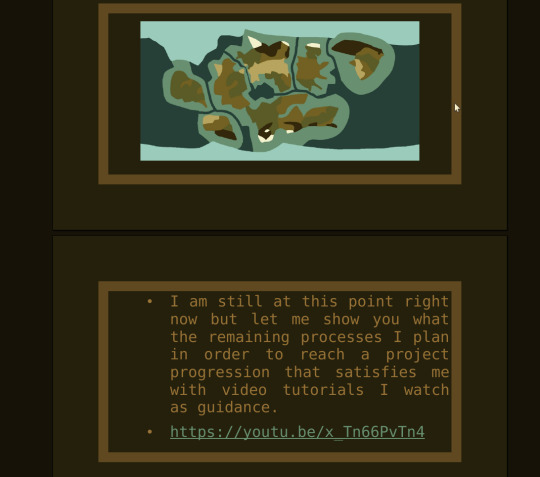
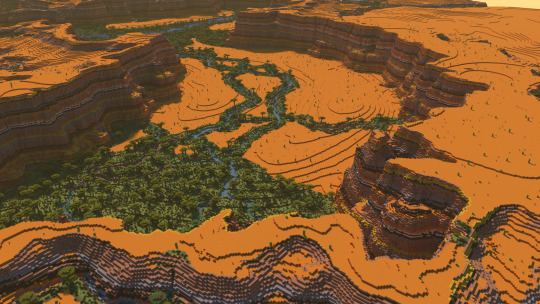

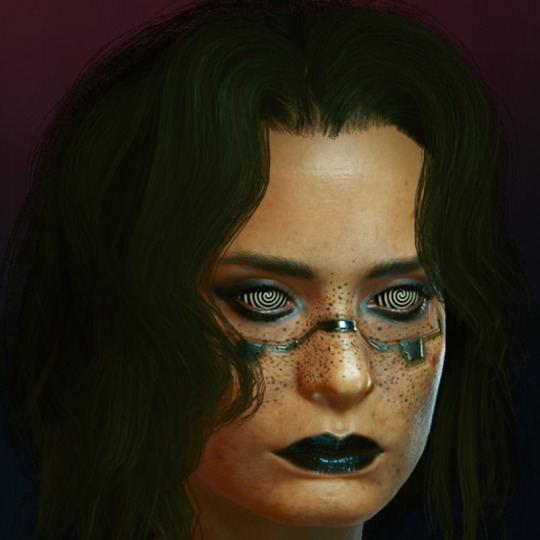


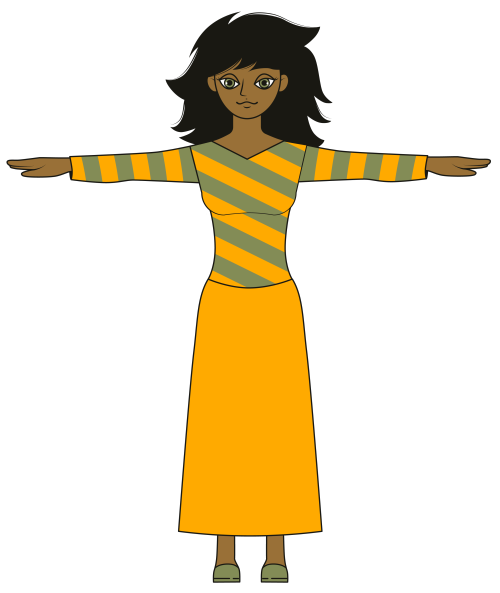

Keywords dump
Groovy soft natural retro grunge warm natural filmic comfort, tramway at dusk from mesas to the ocean far away, distant future LISP DIY copyleft cartoons, symbolic CAS LISP Gruvbox poetic devkit, soft-rounded bold geometric shape language, fontmap vector prefab modules, slice-of-life cozy rollerwave cartoons, communal retrofuturistic optimism, Bauhaus, Art Deco, Art Nouveau, "Gruvbox Light Medium + OldBook Light Academia" mashup, seventies toon cel, copyleft GLOSS data transparency movement, soviet-bloc indie shareware culture, Nintendo 64 console with 64DD expansion cartridge, SEGA Dreamcast, DEC Alpha, Sanyo 3DO TRY, Nuon, Ouya, Commodore PETSCII CBM-II, Commodore Amiga 3000+4000, bronze-age historical time period, Chronokinesis, True Polymorph, lunarpunk mysticism, Teslafunk, Solarpunk, Cyberfunk, syndicalism, georgism, ecology, harmonious innovation, progressives, seventies rollerwave futurism, filmic, OGG container format, OGV, OPUS, Vorbis, OpenEXR, Animated SVG, CSS3 animations, PK3/ZIP file archives, USD format, harsh raster XY plotters & printers, selectric typewriters, comforting Shoshone music / songs / hymns; "Soyuzmultfilm", "Helluva Boss", "The Powerpuff Girls Z", "The Powerpuff Girls", "Jet Set Radio", "Newgrounds", "Jin-Roh The Wolf Brigade", "Android Arts", "Nicky Case", "Jucika", Nintendo 64 with N64DD module, SEGA Dreamcast, Sanyo 3DO, Nuon, Ouya, DEC Alpha, Commodore 64, DECmate II, DECmate III, Intersil 6100 & 6120 lineups, PETSCII, OpenXanadu web, IBM Z/16 Linux One mainframe, OpenPOWER, Libre GLOSS data-transparent Apple Silicon M3 system, RTTY protocols, Minitel / Videotex services, hard-copy terminals, Typex, Telex Teleprinters (read-only & Read/Write), block data terminals, explorable explainers, federated ActivityPub RSS feeds, SPARC Voyager, Xerox Daybreak, R2E Micral Portal, libre bio-modding & cyberware, Pflaumen, Utalics, Lambda Star, Lambda Nova, Wyatt, Sass, MathML, XML+XSL, OpenREXX, PDP-8/e, PDP-12, PDP-15, ALGOL68, LISP 1.5, Steel Bank Common Lisp, Trial Engine, GNU Hurd, Linux, Macroware, SoundTracker, Multi-Agent Simulations, Mixtapes, Android Clades/Classes (Robots, Droids, Synthetics), Open Virtual Worlds, "Rogue Servitors"; "Liberty" caucus within "Union Party", Al-Gore (2000), Trump + Michelle Oprah (2004), Theodore Roosevelt (1912), Charles Hugues (1916), Progressives party since ~1910-1915, Pedro II of Brazil + Haile Selassie equivalent figure during the later 19th century, political split around 2024-2025, female programmers still in charge, gender inclusivity, major 3D, animation & game engine-y frameworks abundant in Common LISP (Trial Engine + AutoLISP as copyleft GLOSS / open source licensed software); Rust red dark grunge wood, translucid glass, matte plastics, fuzzy wool, forest flora, ocean water, arcade cabinets, hyper mall shops & stores, conversation pits, wax cylinder records, 45rpm autoplay mini-vinyl records, datasettes, cassettes, analog Laserdiscs, DECtape, MiniDiscs, programmable androids, retro unit record equipment, mainframes, LTO tape cartridges, amber earmuffs, black spirals-pattern balls, black matte libstick, cloven hoof shoes;
Links
Implicitly includes this blog's archives, especially what deemed relevant under the "maskoch", "maskutchew" & "16^12" hashtags;
Additional detailwork
GRUB 2 Bootloader custom theme, custom global theme with window decorations / Plasma styles / application styles combo, splash-screen / lock screens / login screens, vector-based wallpapers + icons & animated? cursors, 3x4 (soft, medium, hard; dark Gruvbox-alike, light Gruvbox-esque, warm olive green & warm rust orange-red variations), ;
DETAILS
OS: TuxedoOS (will diversify drastically soon, seriously)
DE: KDE/Plasma & KDE/Liquid
WM: KWin
Terminal: Konsole
Shell: Fish shell, with Bash as fallback
Fonts: Cascadia Code & Cascadia Mono
PlasmaStyle: Daisy (+ Old Plastics?), Breeze
Cursor: Simp1e-Gruvbox-Light
ColorScheme: WarmColorsLight
Icons: Gruvbox Plus Dark
Web Browsers: Librewolf, Firefox...
Dotfiles: Not yet anywhere near ready at this time.
More to come relatively soon...
1 note
·
View note
Photo

Voodoo Castle Año: 1978 Plataformas: Apple II, Commodore 64, ZX Spectrum, Atari 8-bit, VIC-20, TI-99/4A, Commodore PET/CBM, TRS-80...
#Apple II#Commodore 64#ZX Spectrum#Atari 8-bit#VIC-20#TI-99/4A#Commodore PET/CBM#TRS-80#TRS-80 CoCo#NEC PC-8801#BBC Micro#FM-7#Browser
0 notes
Note
computer vibes ? heehoo?
Commodore CBM-II

2 notes
·
View notes
Photo



Priority cONTRoL SYsTem fOR CoMmoDORe cOMputeRs
Developed in Germany by Johann F. Beurer, which allows the sharing of disks between different Commodore PETs both 3000-4000-8000 series and 600-700-8200 CBM II series.
34 notes
·
View notes
Text

The Transactor January 1983
Canadian Commodore notable Jim Butterfield contributed several pieces to this issue along with his centerfold. The "News and New Products" section mentioned he'd be working on a show about computers for TVOntario, mentioning that in the first episode "the notorious Butterfield dismembers a perfectly innocent microcomputer, as studio participants witness this sinister perpetration. No word on the brand… a Radio Shack would be the most deserving."
19 notes
·
View notes
Text
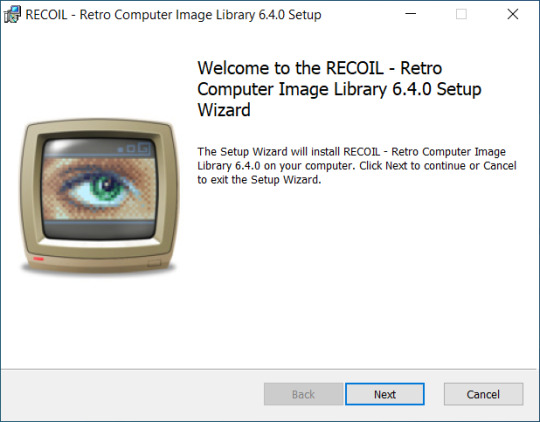
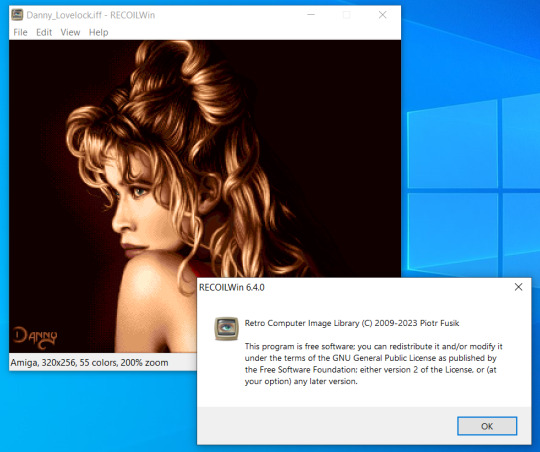
RECOIL 6.4.0 - Retro Computer Image Library decodes Amiga, Amstrad CPC, Apple II, Atari 8-bit, Atari Portfolio, Atari ST/TT/Falcon, BBC Micro, Commodore 64, Commodore 16/116/Plus4, Commodore 128, Electronika BK, FM Towns, HP 48, Macintosh 128K, MSX, NEC PC-80/88/98, Oric, SAM Coupe, Sharp X68000, Tandy 1000, Timex 2048, TRS-80, TRS-80 Color Computer, ZX81 and ZX Spectrum picture formats. The project contains a simple viewer, plug-ins for general-purpose image viewers and editors, and an everything-to-png converter.
#commodore#retro#amiga#c64#vintage#classic#cbm#Amstrad CPC#Apple II#Atari 8-bit#Atari Portfolio#Atari ST/TT/Falcon#BBC Micro#Commodore 64#Commodore 16/116/Plus4#Commodore 128#Electronika BK#FM Towns#HP 48#Macintosh 128K#MSX#NEC PC-80/88/98#Oric#SAM Coupe#Sharp X68000#Tandy 1000#Timex 2048#TRS-80#TRS-80 Color Computer#ZX81
21 notes
·
View notes
Text
Mycenaean Pylos & Tiryns (article 0x15/?) WIP

Continuation on this article thread:
Preface
In the reality that is "16^12", Angora is a striking bronze age-themed inhabited planet of stark contrasts within the galactic community. And while at least as far as what the "state of affairs" is during the dawn of their 46th century things are moving along fair nice and sweet at the global scale [...];

Main characters
Kate Kér (self-insert, autistic INTJ brunette, [...] )
Ava Booksword (synthetic-tier android ENFP blonde, starting out as domestic servant by law and eventually earning her way to full citizenship)
Shoshona (black angora housecat)
Nil (second person perspective camera / audience perspective + insertee)
Secondary agents at play
Tano (INTP)
Milan (ENTP)
May (ISTJ)
Sasha (ISTP)
Pana (ISFP)
Valenz (ESTJ)
Ursa (ENFJ)
Elke (INFP)
Miscellaneous personas to account for (13th - 48th) Will add the 36 of them in a further article.
Massive keywords "deque"
Groovy soft natural retro grunge warm natural filmic comfort, tramway at dusk from mesas to the ocean far away, distant future LISP DIY copyleft cartoons, symbolic CAS LISP Gruvbox poetic devkit, soft-rounded bold geometric shape language, fontmap vector prefab modules, slice-of-life cozy rollerwave cartoons, communal retrofuturistic optimism, Bauhaus, Art Deco, Art Nouveau, "Gruvbox Light Medium" + "OldBook Light Academia" mashup, seventies toon cel, copyleft GLOSS data transparency movement, soviet-bloc indie shareware culture, Nintendo 64 console with 64DD expansion cartridge, SEGA Dreamcast, DEC Alpha, Sanyo 3DO TRY, Nuon, Ouya, Commodore PETSCII CBM-II, Commodore Amiga 3000+4000, bronze-age historical time period, Chronokinesis, True Polymorph, lunarpunk mysticism, Teslafunk, Solarpunk, Cyberfunk, syndicalism, georgism, ecology, harmonious innovation, progressives, seventies rollerwave futurism, filmic, OGG container format, OGV, OPUS, Vorbis, OpenEXR, Animated SVG, CSS3 animations, PK3/ZIP file archives, USD format, harsh raster XY plotters & printers, selectric typewriters, comforting Shoshone music / songs / hymns; "Soyuzmultfilm", "Helluva Boss", "The Powerpuff Girls Z", "The Powerpuff Girls", "Jet Set Radio", "Newgrounds", "Jin-Roh The Wolf Brigade", "Android Arts", "Nicky Case", "Jucika", Nintendo 64 with N64DD module, SEGA Dreamcast, Sanyo 3DO, Nuon, Ouya, DEC Alpha, Commodore 64, DECmate II, DECmate III, Intersil 6100 & 6120 lineups, PETSCII, OpenXanadu web, IBM Z/16 Linux One mainframe, OpenPOWER, Libre GLOSS data-transparent Apple Silicon M3 system, RTTY protocols, Minitel / Videotex services, hard-copy terminals, Typex, Telex Teleprinters (read-only & Read/Write), block data terminals, explorable explainers, federated ActivityPub RSS feeds, SPARC Voyager, Xerox Daybreak, R2E Micral Portal, libre bio-modding & cyberware, Pflaumen, Utalics, Lambda Star, Lambda Nova, Wyatt, Sass, MathML, XML+XSL, OpenREXX, PDP-8/e, PDP-12, PDP-15, ALGOL68, LISP 1.5, Steel Bank Common Lisp, Trial Engine, GNU Hurd, Linux, Macroware, SoundTracker, Multi-Agent Simulations, Mixtapes, Android Clades/Classes (Robots, Droids, Synthetics), Open Virtual Worlds, "Rogue Servitors"; "Liberty" caucus within "Union Party", Al-Gore (2000), Trump + Michelle Oprah (2004), Theodore Roosevelt (1912), Charles Hugues (1916), Progressives party since ~1910-1915, Pedro II of Brazil + Haile Selassie equivalent figure during the later 19th century, political split around 2024-2025, female programmers still in charge, gender inclusivity, major 3D, animation & game engine-y frameworks abundant in Common LISP (Trial Engine + AutoLISP as copyleft GLOSS / open source licensed software); Rust red dark grunge wood, translucid glass, matte plastics, fuzzy wool, forest flora, ocean water, arcade cabinets, hyper mall shops & stores, conversation pits, wax cylinder records, 45rpm autoplay mini-vinyl records, datasettes, cassettes, analog Laserdiscs, DECtape, MiniDiscs, programmable androids, retro unit record equipment, mainframes, LTO tape cartridges, amber earmuffs, black spirals-pattern balls, black matte lipstick, cloven hoof shoes; [...]
Soundscapes, music & ambiance playlist
Shoshone Union (So)fi music playlist?
Locations, maps & contextual clues
Beyond Heat Death / Entropy time periods of a far far away past dimension lies questions & their answers we were seeking for... , ?;
0 notes
Photo

Dunjonquest: The Datestones of Ryn Año: 1979 Plataformas: Apple II, Commodore 64, Atari 8-bit, Commodore PET/CBM, TRS-80
0 notes
Text
The Vic 20, The Commodore 64, and a brief history of Commodore's 8-bit line

Photo from Wikipedia - (By Evan-Amos - Own work, Public Domain, https://commons.wikimedia.org/w/index.php?curid=17414881)
Commodore was one of those companies that were in the middle of the computer revolution. They were innovators in the industry, able to bring computers to the masses. They were the leaders in 8-bit computing. They controlled the home computer market through most of the 80's. That ended in the late 80's as the computer industry became more competitive.
The Brief History of Commodore's 8-Bit Computer Line (featuring their most notable models.
Commodore launched in 1954 as an electronics company in 1954. They started out making calculators and other home and business electronics. In the 1970's and 80's they participated in the computer revolution. Commodore's first computer design was the KIM-1 designed for MOS Technologies in 1976.
In 1977 the first Commodore branded computer was the PET/CBM range of systems. PET stands for the Personal Electronic Transactor. The line formed the basis for all Commodore's 8-bit line of computers. This line of computers used the MOS Technologies 6502 microprocessor, and had up to 32K of RAM. The PET of computers used Basic 1.0 as it's operating system. Software for the PET came on cassette and disks. This First generation of the PET cost $795 US due to the integrated display.
In 1981 Commodore released the lower priced Vic-20. A successor to the PET. It ran the same MOS 6502 and has 5K of RAM (expandable to 32K like the first gen PET). Unlike the PET the VIC 20 connects to a regular TV which saved cost in manufacturing. Software for the Vic-20 came on cassettes, disks, and ROM cartridges. Cassettes and disks required external drives. This is another way Commodore saved money on manufacturing costs. The VIC-20 uses Command Kernel and Basic 2.0 for the Operating System. The introductory price of the Vic-20 was $299.95.
Between the VIC-20 and the Commodore 64 there was the release of the Commodore CBM-II. The CBM-II came in 2 models. The P-series sold as the home model , and used a MOS 6509, The B-series came with the Intel 8088 or the Zilog Z80. The B-Series came with an integrated display. Both the P and B series computers came with Microsoft Basic 4.0 pre-installed.
The Commodore MAX is another computer released before the 64. It runs on a MOS 6510, and 2KB of RAM. The MAX has a better graphics system than the VIC-20 due to it's .5KB of dedicated video memory. It also has better sound. The MAX has limited IO. It only has a cartridge slot for software cartridges. The MAX released in Japan in 1982 and discontinued in 1982. The Max is a failure, and that is likely due to the simultaneous release of the more powerful Commodore 64. The MAX cost $200.
The Commodore 64 released in January 1982. It is the successor of the VIC-20. It used the MOS 6510 and the MOS 8500, and has 64KB RAM and a 20KB ROM for the OS. It used the KERNEL, Basic 2.0 and GEOS (Gem OS, GUI based OS) operating systems. The Commodore 64 was a significant leap from the 6502-based VIC-20. With the extra processing power and memory, and it's sub $600 price it ruled the low-end computer market in the 80's. Part of the success of the 64 comes from it's availability at local department stores like Sears. It made the 64 accessible to the masses. The Commodore 64 was also released in an educational model titled the Educator 64. It shipped with a display and the open source Otiki OS, and Microsoft Basic 2.0. The Commodore 64 was also released as a portable computer as the Commodore SX-64. It released as a portable suitcase computer with a built in Floppy Disk drive. The Commodore 64 sold from 1982 through 1994. There were some minor releases like the Commodore 64 game system. The Commodore 64 can use the software from the VIC-20 and the MAX. It can run software on cassettes, cartridges, and floppy disks.
The Commodore 16 was an entry level computer designed to replace the VIC-20. It was released in 1984 for around $80. The Commodore 116 is identical to the Commodore 16 made for the European market. These computers use the MOS 7501 (compatible with the 5602). These computers come with 16KB RAM and 32KB ROM. These computers come with Commodore basic 3.5 as the OS. These computers can use software on cassette and cartridges. The Commodore Plus 4 is an upgraded version of the Commodore 16. It has an upgraded 64KB RAM and 64KB ROM. It sold for $299 marketed at business users. The key feature of the Plus 4 is that it came preinstalled with an office suite.
The Commodore 128 is the last 8-bit computer made by Commodore. It was released in 1985 running the MOS 8502 with 128KB of RAM. The second version of the 128 also had a Zilog Z80 microprocessor. This allowed it to run the 64's software. The 128 is expandable to 640KB RAM with upgrades. It runs Commodore Basic 7.0 and Digital Research CP/M 3.0 operating system. The Commodore 128 is the successor to the Commodore 64 and VIC-20. The 128 can run cassettes, cartridges, and floppy disks.
In 1985 Commodore also released the Amiga computer system. Although the Amiga is not an 8-bit computer it is important system in computing history. The Amiga, like the Macintosh, uses a graphical user interface (GUI) and a mouse to navigate the system. The computer also had advanced video and audio processors. For media purposes it was more capable than the Mac for video editing and audio production. Post production of many television shows in the 90's were processed on the Amiga. The Amiga was also the beginning of the end for Commodore. Poor management, engineering problems, and competition from competitors put pressure on Commodore. With that came internal strife in the upper management and engineering teams. Commodore lost its market share and went bankrupt in 1994. The Amiga technology, sold to other manufacturers, never made a comeback. The Commodore name did make a comeback in 2010 as Commodore USA. They sold Intel PCs in classic Commodore computer cases like the Commodore 64. It ran Microsoft Windows and emulated the Commodore 64. They licensed the Amiga name and the AROS (the current version of the Amiga OS) in 2012, but they went bankrupt in 2013.
My experience with the Commodore VIC-20
My experience with the VIC-20 came from my Uncle. My Uncle loaned my family his computer to use during his move to another state in 1982. It was my family's first experience with a computer. I was 6 at the time and I remember having to load all the software using cassette tapes and cartridges. I started to learn about computer programming at that time. Adding abilities to the computer meant writing programs and entering programs from books. After using the VIC-20 for about a year we boxed it up and shipped it back to my Uncle.
My Experience with the Commodore 64
The Commodore 64 was also provided by my Uncle. We got it in 1983 for Christmas. For the most part it felt like the VIC-20. Unlike the VIC-20 we had access to software because of its availability at local Sears stores. At the time there were magazines available with shareware disks and programming examples. There were also hundreds of books available at the local library. We used the 64 until January 1986 when we replaced all our older computers with an Apple-IIGS.
Conclusion
In all honesty I don't remember much about the Commodore computers we owned. I remember that I learned basic programming on the VIC-20, and I learned software design on the 64. I remember the load times from cassette software, and the days of typing code to play clones of the classics. Those are very brief memories. The Commodore-64 holds a bit of nostalgia for me because it is where.
0 notes
Photo




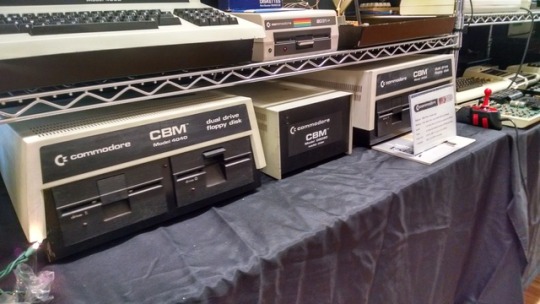





Commodorians Part 1
This was one of the three mega exhibits for the 40th anniversary of the big three appliance computers launched in 1977. Anthony Becker, Jeffrey Brace, Chris Fala, Todd George (captain), & Bill Winters combined their skills, collection, and love for Commodore equipment to showcase the PET-2001′s family tree.
Before Commodore Business Machines was making computers, they were making office equipment, namely typewriters.�� They got into the game of manufacturing adding machines, followed by calculators which were constantly decreasing in size while improving their capabilities. During the calculator wars, Texas Instruments had an upper hand in the market by being a main source of calculator integrated circuits. In an attempt to subvert TI’s control, Commodore purchased MOS Technology so they could produce their own semiconductors in house.
It just so happened that MOS had a microprocessor, the now famous 6502, which they were using in the KIM-1 trainer./demonstrator. Commodore continued selling the KIM-1 with their own branding, and one was on display acting as a clock.
However, the 6502 really shined in their first home computer, the PET-2001, available initially in an 8K version and a short lived 4K version. The PET was unique compared to its contemporary appliance home computers (the Apple II and TRS-80 Model I) in that it included a monitor and tape drive all in the same chassis. You’ll also note that the case of the 2001 is made from metal, not plastic like the competition. In true Commodore fashion, this was a money saving move -- they re-purposed their file cabinet manufacturing arm to make cases for the PET line resulting in very sturdy cases. The keyboards were re-purposed from cash registers, resulting in an incredibly clunky and uncomfortable design that didn’t last long.
I made it a personal mission to sit down at the PET-2001-8, just as I had at my first VCF East a decade ago, and program something. I tweaked the existing random character generator program on screen to use different PETSCII graphics than the demonstrator they had set up. This is an early blue bezel model, which makes up for the terrible chiclet keyboard.
The PET-2001 was succeeded by the 4000 and 8000 series machines, boasting larger screen options, a proper full travel QWERTY keyboard, more memory, better external interfaces, and more advanced versions of Microsoft BASIC. The IEEE-488 interface was fully implemented by this point, and was used with larger storage mediums like the 4040 and 8050 dual floppy drives, and rare CBM D9090 hard disk drive. The real oddity here is the very late SFD1001 drive, which uses the IEEE-488 parallel interface, but crams it into the case of a later 1541 drive more synonymous with the C64.
#VCF East XII#commodorez goes to vcfexii#vcfexii#vintage computer festival east xii#vintage computer fesitval east#Commodore PET 2001#PETSCII#pet 2001#Commodore#pet 2001-8#KIM-1#PET-4032#PET 4032#commodore pet 8032
149 notes
·
View notes
Photo

REV'n'GE Ausgabe 78 online
REV'n'GE (Retro Emulator Vision and Game) ist ein italienisch- und englischsprachiges PDF-Magazin, nicht nur für Commodore-Fans in den es hauptsächlich um Spiele-Reviews geht. Einige der Themen der Ausgabe #78: Arabian Nights (Amiga), Cosmic Causeway: Trailblazer II (C64), Cosmic Commando (C64), Escape from Coldtiz (Amiga), S-Racer (CBM PET), Trizons (C16). Das Magazin kann von www.sendspace.com oder Mega als PDF-Datei runtergeladen werden.
Zum Eintrag
0 notes
